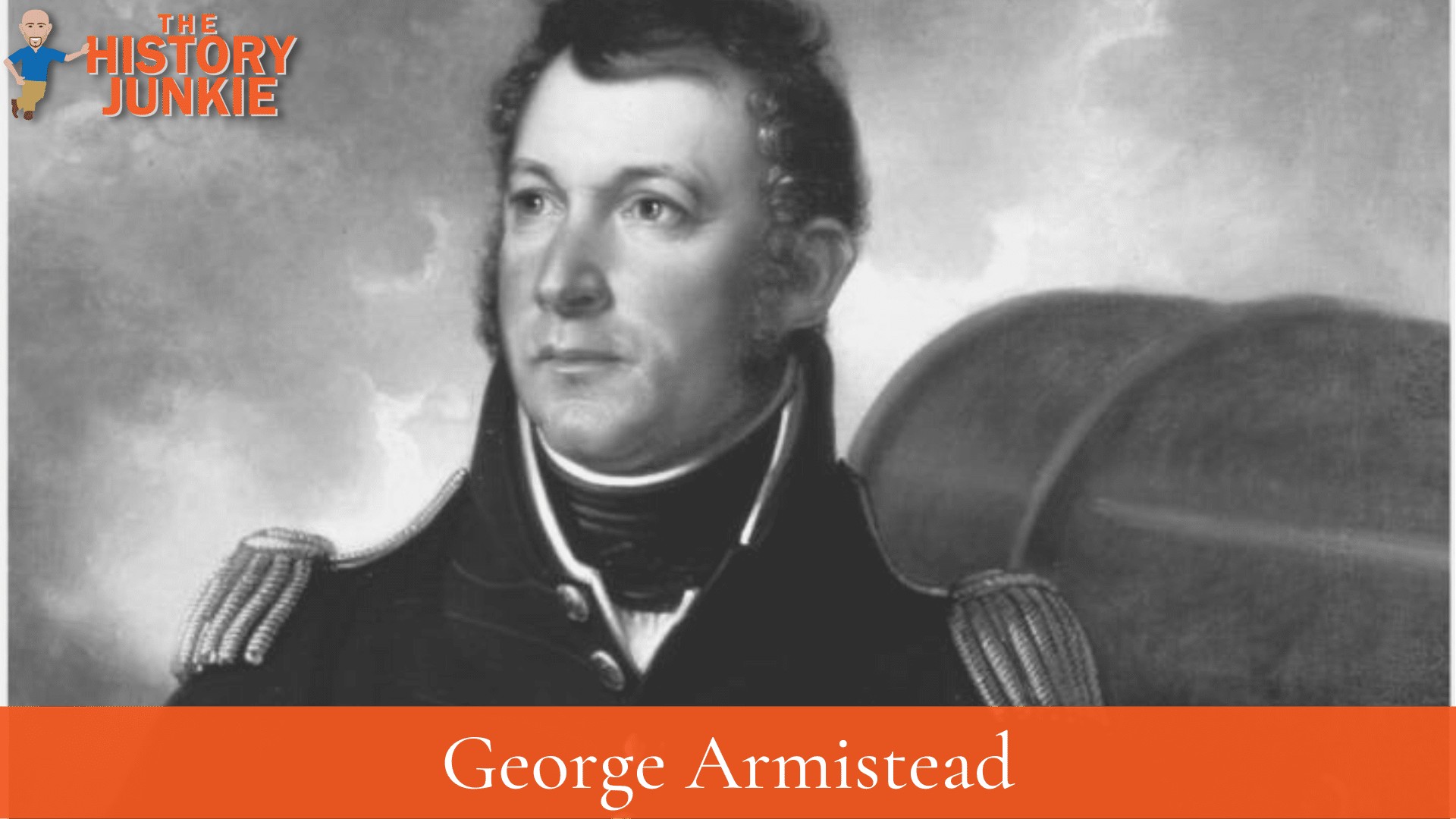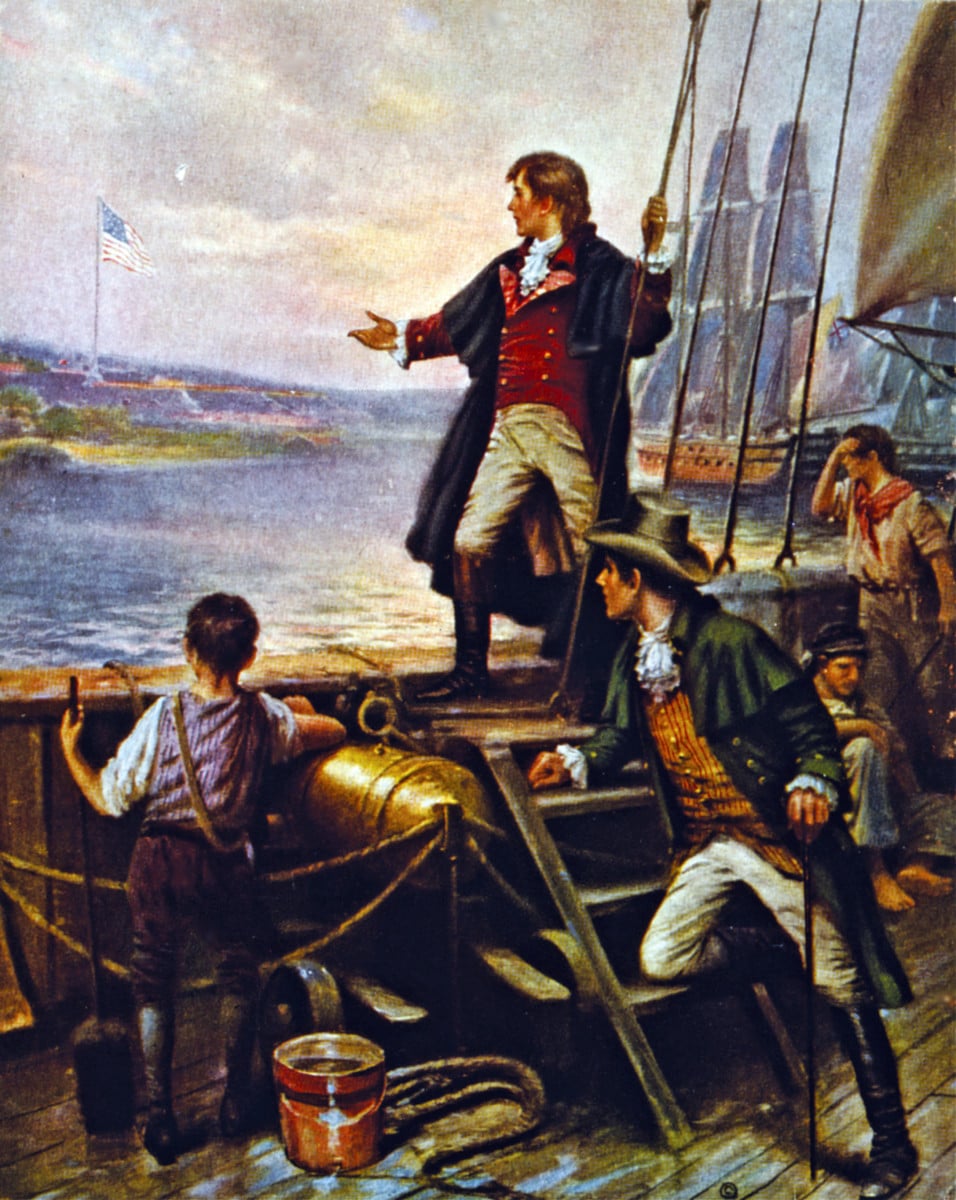George Armistead was an American military officer who served as the commander of Fort McHenry during the Battle of Baltimore in the War of 1812.

He was born in Newmarket, Caroline County, Virginia.
George Armistead was one of five brothers who served in the War of 1812, either in the regular army or militia.
Jump to:
War of 1812
He distinguished himself at the capture of Fort George from the British, near the mouth of Niagara River in Canada, on May 27, 1813, while serving as an artillery officer at Fort Niagara.
He would later carry the captured British flags to President James Madison. Upon his arrival in Washington, Armistead was ordered to "take command of Fort McHenry."
When he arrived at Fort McHenry, located in the outer harbor of Baltimore, Maryland, Armistead ordered "a flag so large that the British would have no difficulty seeing it from a distance."

That flag, known as the Star-Spangled Banner Flag, measured 42' x 30', and was sewn by Baltimore resident Mary Pickersgill and would be later memorialized by Francis Scott Key in the song "The Star-Spangled Banner."
During the nearly 25-hour bombardment, commencing before dawn on September 13 until the morning of September 14, 1814, Armistead alone knew the fort’s magazine was not bombproof.
When a shell crashed through the roof of the magazine but failed to explode, Armistead ordered the powder barrels cleared out and placed under the rear walls of the fort.
Remarkably, only two men were killed when two shells smashed into the fort's southwest bastion. This was despite a deadly rain of some 2,000 mortar shells that the British bombardment fleet had fired at the fort.
Because the Royal Navy proved unable to capture or reduce the fort in order to enter Baltimore harbor to bombard the main American defense line east of the city, British commander-in-chief Vice-Admiral Sir Alexander Cochrane wrote to new British Army commander Colonel Arthur Brooke that it was up to him whether to decide to attack or withdraw.
Brooke, who had taken over from Major-General Robert Ross, who was mortally wounded just before the Battle of North Point on September 12, decided to withdraw.
Following the battle, Armistead was soon promoted to lieutenant colonel.
Death and Legacy
The battle had left many scars on George Armistead. Its preparation had worn him down, and the battle itself had shattered his nervous system.
It is believed he had heart disease due to his shattered nerves. Armistead died on April 25, 1818, and was given a memorable funeral. A statue of him overlooks the city.
The Armistead family had a few military descendants, but there were two notables.
The first notable figure was Lewis Armistead. He was a well-known General for the Confederacy during the Civil War who died at the Battle of Gettysburg on day 3 of the battle.
The second was his grandson, Ebenezer Appleton. The Star-Spangled Banner was given to George Armistead after the battle, and it was passed down through the family. Appleton lent the Star-Spangled Banner to the Smithsonian Institution in 1907.
The loan would become permanent in 1912. It would be sung at the 1918 World Series and eventually become the national anthem.
